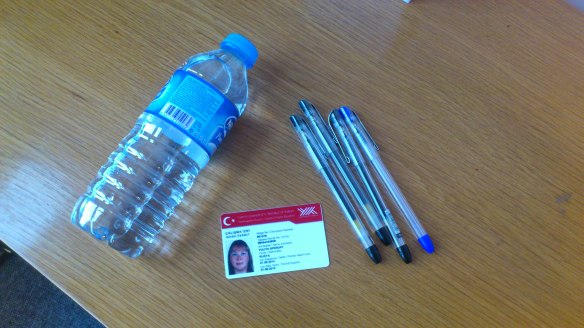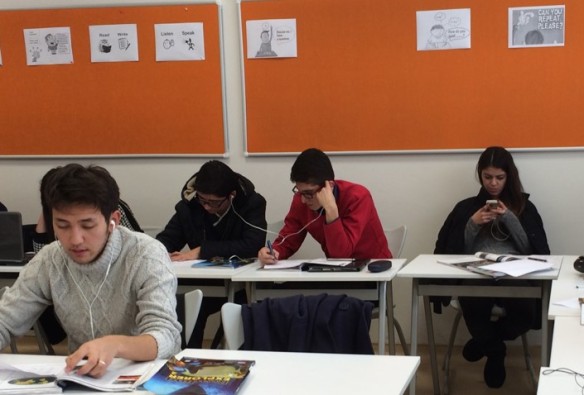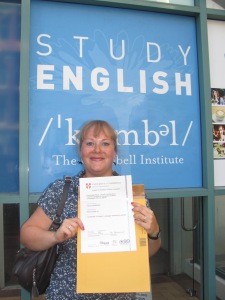How I found out about Kahoot!
“I did not sign up for this! I am an English teacher, not a wildlife wrangler! And I am never playing competitive games in my classroom again!”, I was thinking to myself as I watched my 20-student class erupt into shouts, scattering answer cards around the classroom and stabbing the air with uncapped (oh horror!) markers for emphasis.
It all started well enough. In order to review some of the material we covered in the last few weeks, I devised a PowerPoint-based quiz. Students were working in groups and had to answer a variety of questions, i.e. finding a spelling mistake in a sentence, choosing a word that matches the definition on the screen etc. The teams had to write their answers on large answer cards and lift them in the air. The first team who displayed a correct answer (including correct spelling) gets a point. And here lies the problem. Hard as I tried, I was never sure if I made the right call as to who was the first. The students didn’t help the matters, claiming that it was definitely their team who answered first, even as their teammates were still writing an answer down.
It was during one of these ‘WE WERE FIRST TEACHER’ shouting matches when a student asked me why I wasn’t using Kahoot! He had me at ‘you answer with your mobile phone and the game sees who was first’. I questioned the student about which of my colleagues used this amazing game and set to researching.
What is Kahoot! and how does it work?
As I found out, Kahoot! is a free online platform for creating and running learning games. It can be used to create multiple-choice questions with embedded pictures and videos. . Teachers can either create their own Kahoots or search for publicly available games. There are tons of Kahoots out there based on specific textbooks such as New English File or specific grammar points. You can also check out trending Kahoots as well as most popular ones, although bear in mind that not all of them will be related to language learning – Kahoot! is popular in all learning environments and subjects including regular school subjects like chemistry or math.










 be, it was an extremely positive experience.Our teaching practice groups (elementary and intermediate levels) have been patient with us and enthusiastic about learning. We had the most amazing tutors on this course: Mo Killip, Jo Leach and Annie Marenghi – collectively and individually -were everything a teacher trainer should be: patient, encouraging, extremely knowledgeable, inspiring and supportive. When I enrolled into the course, I had been teaching for about 5 years and I still learned loads and loads of things as well as made some great friends among my fellow trainees that I keep in touch with to this day.
be, it was an extremely positive experience.Our teaching practice groups (elementary and intermediate levels) have been patient with us and enthusiastic about learning. We had the most amazing tutors on this course: Mo Killip, Jo Leach and Annie Marenghi – collectively and individually -were everything a teacher trainer should be: patient, encouraging, extremely knowledgeable, inspiring and supportive. When I enrolled into the course, I had been teaching for about 5 years and I still learned loads and loads of things as well as made some great friends among my fellow trainees that I keep in touch with to this day.